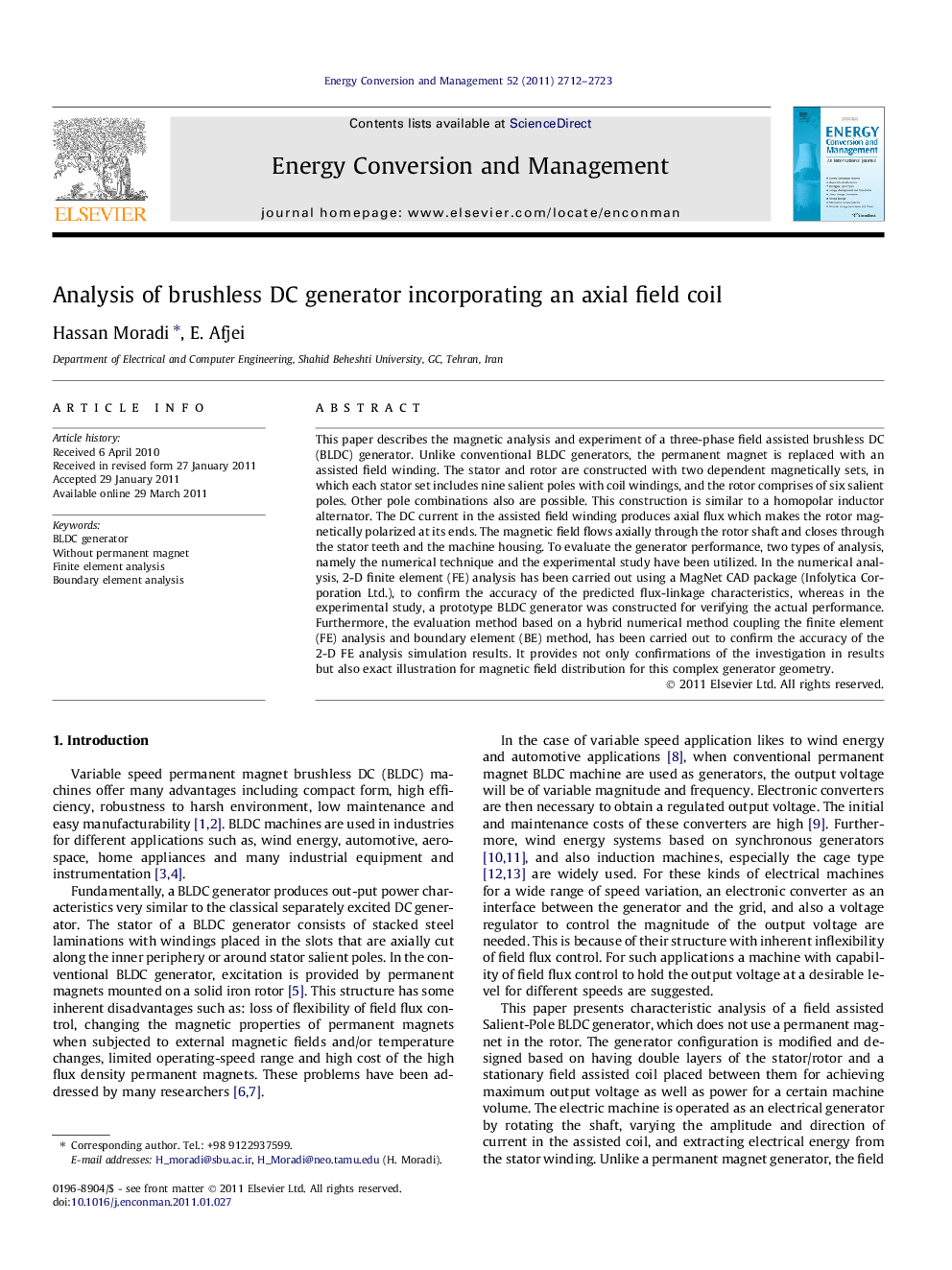| Article ID | Journal | Published Year | Pages | File Type |
|---|---|---|---|---|
| 764480 | Energy Conversion and Management | 2011 | 12 Pages |
This paper describes the magnetic analysis and experiment of a three-phase field assisted brushless DC (BLDC) generator. Unlike conventional BLDC generators, the permanent magnet is replaced with an assisted field winding. The stator and rotor are constructed with two dependent magnetically sets, in which each stator set includes nine salient poles with coil windings, and the rotor comprises of six salient poles. Other pole combinations also are possible. This construction is similar to a homopolar inductor alternator. The DC current in the assisted field winding produces axial flux which makes the rotor magnetically polarized at its ends. The magnetic field flows axially through the rotor shaft and closes through the stator teeth and the machine housing. To evaluate the generator performance, two types of analysis, namely the numerical technique and the experimental study have been utilized. In the numerical analysis, 2-D finite element (FE) analysis has been carried out using a MagNet CAD package (Infolytica Corporation Ltd.), to confirm the accuracy of the predicted flux-linkage characteristics, whereas in the experimental study, a prototype BLDC generator was constructed for verifying the actual performance. Furthermore, the evaluation method based on a hybrid numerical method coupling the finite element (FE) analysis and boundary element (BE) method, has been carried out to confirm the accuracy of the 2-D FE analysis simulation results. It provides not only confirmations of the investigation in results but also exact illustration for magnetic field distribution for this complex generator geometry.
► Magnetic analysis and experiment of a three-phase field assisted BLDC generator. ► Confirm the accuracy of the predicted flux-linkage by 2-D FE analysis. ► Confirm the accuracy of the FE analysis results by coupling the FE and BE method. ► Control the output voltage to a desired level by control the amplitude of the If. ► Compatible with any application that requires variable speed operation.
